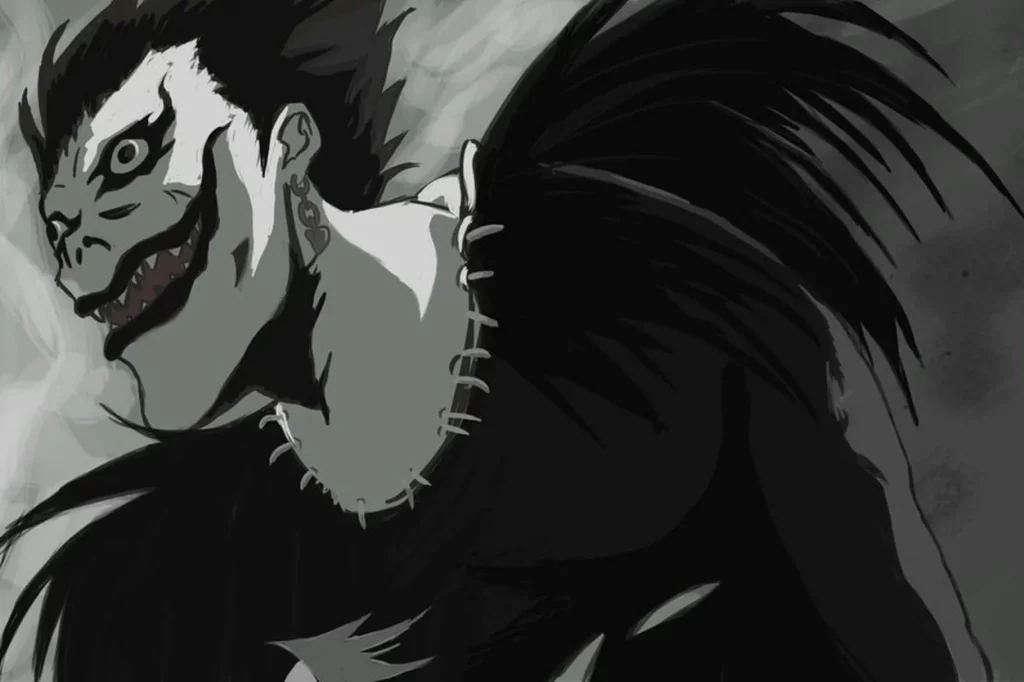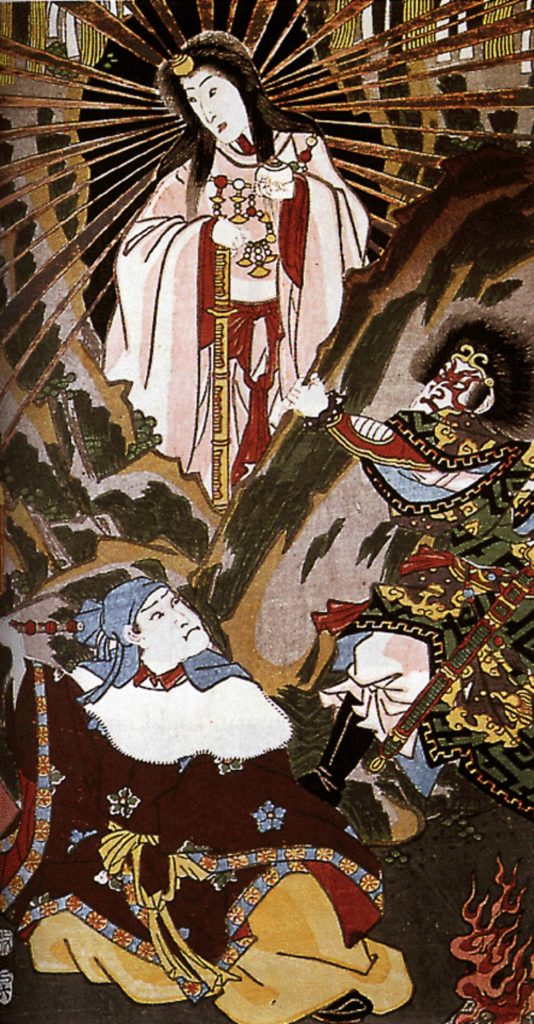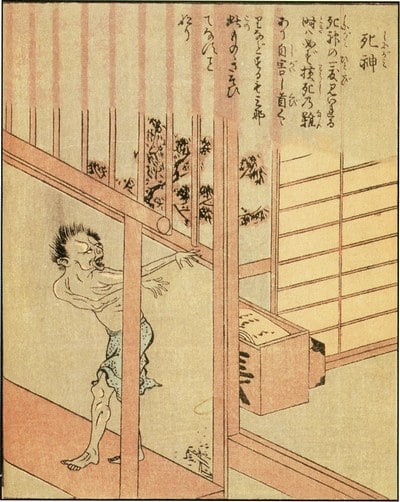Last updated on January 29th, 2023 at 08:19 pm
In Japanese folklore, the Shinigami are death gods who play an essential role in the afterlife. People believed them to be spirits who guided the dead to the next world, and they were often portrayed differently than the dark and fearsome beings of Western beliefs.
Their influence can be seen throughout Japanese culture, from traditional art to popular anime and manga. This blog post will look at these fascinating creatures and explore their role in Japanese mythology.

Who Are the Shinigami?
The Shinigami are spirits who preside over the death of humans. These beings did not exist in traditional Japanese folklore. The word comprises two words, “Shi,” meaning death, and “kami,” which means god or spirit.
Spirits and gods are part of Japan’s culture, but the Shinigami only joined the narrative sometime in the 18th or 19th century. You won’t find an instance of Shinigami in Japanese literature until the Edo Period.
In most cases, they are considered benevolent beings who guide the dead to the afterlife. Though many assume they are look similar to the Grim Reaper, most literature portrays them as something less frightening.
For instance, Shinigami are regarded as natural occurrences and part of the cycle of life instead of a supernatural being sent to reap you from existence.
The Shinigami are often associated with the Grim Reaper because this new death god didn’t appear until Japanese ideas mixed with Western culture. These ideals mixed with traditional Buddhist, Taoist, and Shinto beliefs.
What did Shinigami look like?
In terms of appearance, no one is sure what a Shinigami looks like. While the Grim Reaper has a different appearance and carries a scythe, the Shinigami can hide in plain sight or be invisible until you are close to death. Otherwise, these beings never take on the same shape.
They are said to wear black kimonos and have long white hair, but that is about as specific as descriptions get. Some artwork will show their small childlike appearance, while others make them look like skeletal older women.
It’s safe to say they aren’t the most consistent creatures in Japanese folklore due to their recent appearance in history.
The critical thing to remember is that they are benevolent beings who guide the dead to the afterlife. Of course, it’s only natural to fear death, but the Shinigami offer a more peaceful transition into the next life.
The Shinigami in Folklore
As aforementioned, the first instance of Shinigami in Japanese literature was during the Edo Period. Due to the recent introduction of Shinigami in Japanese culture, it’s difficult to determine the role of these gods of death. Although, it’s essential to understand that the Shinigami are also “kami,” essentially gods.

In this light, it’s possible to see how Shinigami might have taken on a more critical role in Japanese folklore. In addition, everything has a spirit, even places, and things. So, you could say that rivers and the sky have kami, so it’s only natural that the death kami are Shinigami.
A theme throughout later Japanese culture is that the Shinigami invite people to the afterlife and don’t necessarily cause death. In truth, Shinigami have no control over the life of anyone and can only take someone to the afterlife when it is their time.
Popular stories depict that life is tied to burning a wax candle. As the candle burns, so does a person’s life. Once the candle has burned down, it’s said that the Shinigami will come to take them away.

This idea is heavily rooted in the opinion of Fate and that every living has an intended path to follow, and the Shinigami keep watch on that path.
As we mentioned before, it’s difficult to determine the role of these death gods. For instance, consider several famous books like the Ehon Hyaku Monogatari in 1841 or the Mekuranagaya Umega Kagatobi in 1886, where the Shinigami are known as evil spirits.
In these works, the Shinigami are up to no good and enjoy playing tricks on humans or getting them to commit suicide. Some Shinigami stories tell of the kami making deals with people and then tricking them into their deaths by giving them favors.
In some instances, the Shinigami possess people and drive them to ruin or lead them to their deaths in strange places. However, other contradictory stories describe the Shinigami as gods that reign over the realm of the dead and govern the fabric of life and death.
How Do Shinigami Influence Modern Japanese Culture?
The Shinigami have been a part of Japanese culture for less than two hundred years, but they’ve made a significant impact. In modern Japanese pop culture, Shinigami are often used as personifications of death.
For instance, the popular manga and anime series Death Note is about a Shinigami named Ryuk who drops his Death Note. This notebook takes the life of anyone whose name is written in it.
Ryuk befriends a high school student named Light Yagami, who uses the notebook to take out criminals in the story. Of course, as one might expect, things quickly spiral out of control, and the manga becomes a battle of wits between Light and the police.
The Shinigami in Death Note is very different from traditional folkloric Shinigami as they are much eviler and seem to take joy in taking a human life.
While this image of the Shinigami might be popular in Japanese pop culture, it’s important to remember that the Shinigami of folklore was not always evil. Instead, they were often seen as helpful kami that showed humans the way to the afterlife.
The Shinigami are just one example of the many intriguing aspects of Japanese culture and folklore. Modern Japanese who belong to the Shinto religion or older generations might still believe in the Shinigami and their ability to guide humans to the afterlife.
And although the image of the Shinigami has changed over time, it’s clear that they still have a place in Japanese culture.

